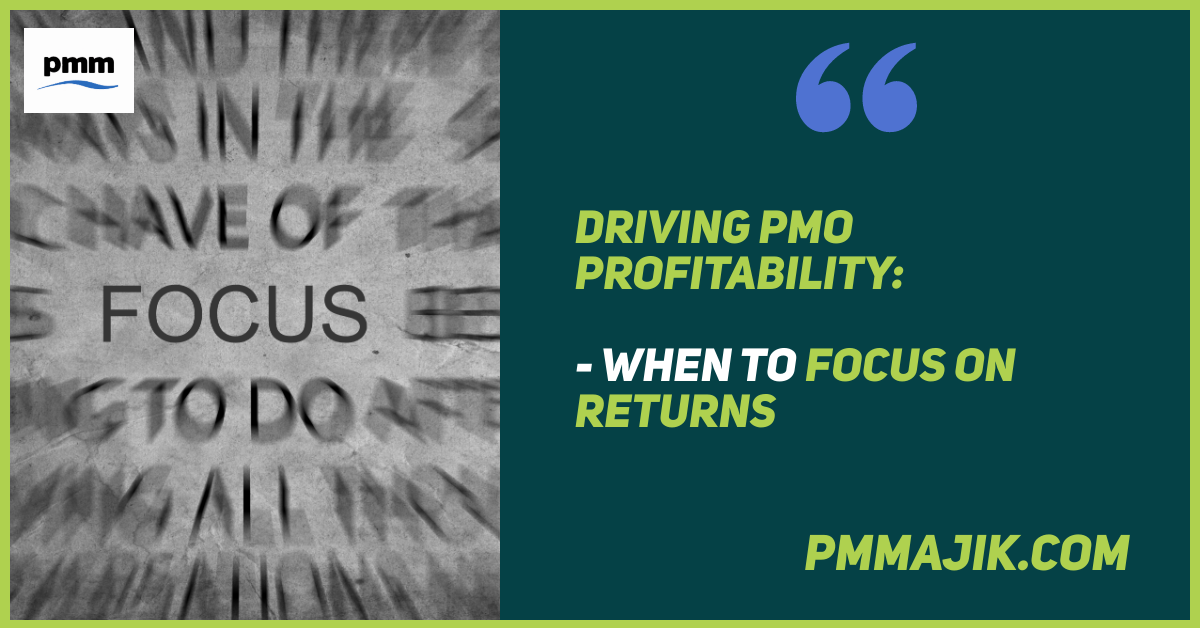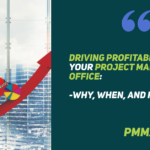When setting up a project management office (PMO), any business will have a budget in mind. Your office will have cash allocated to get started, but when is it time to focus on returns and drive profitability in your PMO?
You need to work on setting up your PMO and all the processes that entails before you can really work on being profitable, much like a business in general. You need to wait until your office is bedded in and functional before you’ll see returns.
To help you figure out when this should be, we’re going to cover:
- The stage of the PMO lifecycle where you can expect profit
- How to ensure you reach profitability at maturity
- Turning an unprofitable mature PMO around
So you can have the right focus from the beginning.
At what stage of a PMO lifecycle will I see profits?
There are a range of different ways you can measure the maturity of your PMO – we looked at the common ways in a previous blog.
In general, you should expect to see profit towards the later or last stage of your PMO maturity. This is the point where your office will be focussing on optimising processes and projects and implementing incremental improvements rather than wholesale changes.
You may see returns starting earlier in your PMO lifecycle, but don’t expect this to happen – see it as a nice bonus for your hard work.
At the improving and optimising stage of your PMO, you should be looking for efficiencies and how to deliver an overall better project. This will entail more projects getting delivered on time and on budget.
How do I build profitability into my long-term PMO plan?
While you work towards a mature and sustainable PMO – that will hopefully generate profit – you can start to embed the right principles.
If profit is a part of your PMO remit or KPIs, you need to make sure that it is part of the conversation from the beginning. Doing a hard lane change from compliance to profit, for example, can upset processes and change how people perceive their work.
From the start of your PMO, you can work on profitability by:
- Ensuring your processes and planning frameworks are designed to monitor costs and returns in financial as well as product or user terms.
- Calculating the profit or loss for each project during the project closing process so you have long-term trend data to refer to.
- Understanding the opportunity costs in financial terms whenever a project delay or change happens – bringing the idea of financial responsibility into project decisions.
Talking about profitability and financial data when working with projects makes sure that everyone involved knows that this is a priority. Of course, you need to balance it with client and user considerations as well, but having it as part of the conversation will keep it top of mind.
How to turn around a mature, unprofitable PMO?
If you’ve assessed your PMO to be mature and ready to be sustainable in the long-run, but don’t see profit, this may be a major issue.
You will need to take a close look at the data you have on your projects and your PMO costs. Some of the things you can do include:
- Look at the major financial costs in your PMO and see if there are efficiencies to be made.
- Look at a dataset of recent projects and look at where money is being spent – is there duplication? Can resources be shared to be more effective?
- Assess projected costs against actual costs and look for patterns in under-budgeting and under-forecasting so you can get the targets right from the start.
By taking a broad view and drilling down into the specifics where you see issues, you can begin to find cost reductions and ways to optimise for cost as well as project delivery.
Knowing when to start focussing on profit in a PMO
When your remit is to drive profitability in your PMO, when to focus on returns is key. You need to get your PMO to maturity before you can start to really work towards profitability, but you can build the consciousness of the goal into your office much earlier, too.



